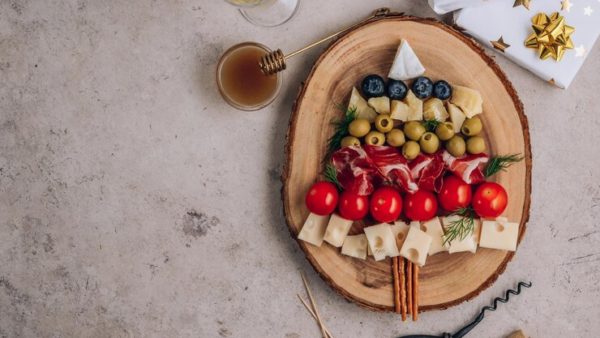“Natale con i tuoi Pasqua con chi vuoi” is a phrase that is used all over Italy and it means that for Christmas everyone should be together to celebrate, rejoice, cook and congratulate each other.Christmas Eve in Italy is a night of magical celebrations, cherished traditions, and, above all, exceptional food. While Christmas Day often takes the spotlight in many cultures, in Italy, it’s Christmas Eve, known as “La Vigilia,” that steals the show. On this enchanting evening, families gather around the table to partake in a feast of symbolic dishes that vary from region to region. In this blog post, we embark on a culinary journey through Italy, exploring traditional Christmas Eve dishes from the northern Alps down to the sun-soaked shores of the south.
Northern Italy: Alpine Elegance
1. Panettone
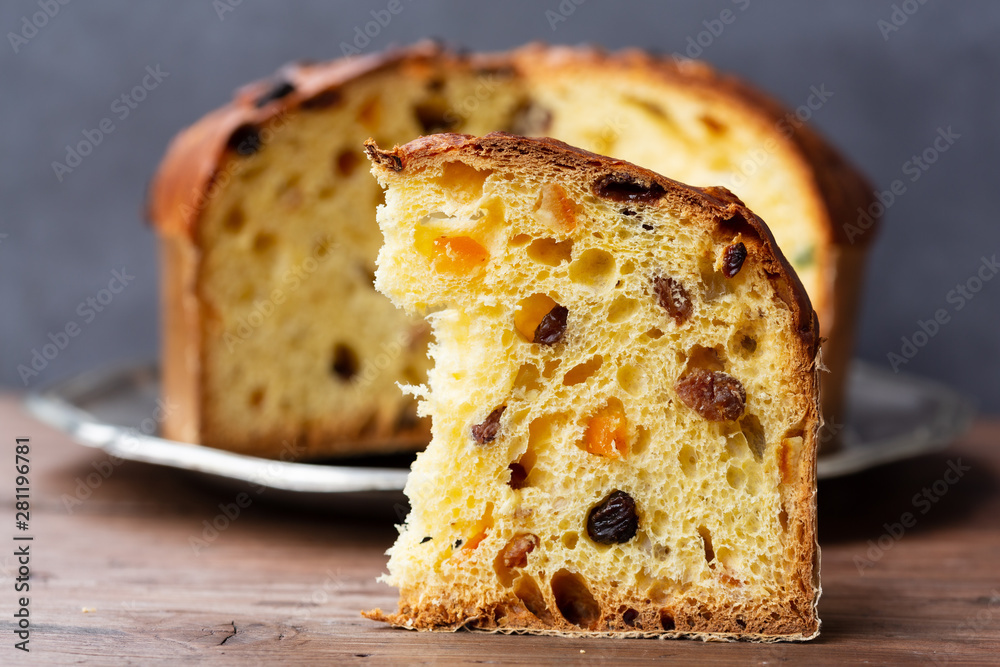
- Description: Panettone is a tall, dome-shaped sweet bread studded with candied fruits and raisins, typically enjoyed as a dessert.
- Significance: It symbolizes the sweetness of life and the joy of sharing special moments with loved ones during the holiday.
Panettone is an iconic Italian Christmas bread that holds immense significance during the holiday season and beyond:
1. Culinary Tradition: Panettone has deep roots in Italian culinary traditions, particularly in Northern Italy. Its presence on the Christmas table represents the importance of preserving and passing down culinary heritage through generations.
2. Festive Symbolism: Panettone is often adorned with festive packaging and makes for a visually striking centerpiece on the Christmas table. It symbolizes the spirit of celebration and joy during the holiday season.
3. Seasonal Delight: Christmas falls during the winter months when Panettone is at its best. The sweet, fluffy bread filled with candied fruits and raisins embodies the idea of enjoying seasonal treats and savoring the flavors of the holidays.
4. Unity and Sharing: Christmas is a time for family gatherings, and sharing a slice of Panettone reinforces the unity of the family and the joy of coming together during this special time. It’s a symbol of togetherness.
5. Gift of Choice: Panettone is a popular gift during the holiday season. Sharing a Panettone with friends and loved ones is a gesture of goodwill and reflects the tradition of giving and receiving gifts during Christmas.
6. Versatility: While traditional Panettone is widely loved, there are numerous variations available, including versions with different fillings and toppings. This versatility allows individuals and families to choose the Panettone that best suits their preferences.
7. Cultural Pride: Panettone is a source of cultural pride for Italians. It represents the rich culinary heritage and diversity of Italian cuisine, showcasing the creativity and craftsmanship of bakers who prepare it.
In essence, Panettone is more than just a bread; it’s a representation of Italy’s cultural richness, the celebration of tradition, the importance of family, and the joy of the Christmas season. Its history, symbolism, and delightful flavors make it an integral and cherished part of holiday celebrations in Italy and around the world.
2. Cotechino con Lenticchie (Cotechino with Lentils)

- Description: Cotechino is a large, flavorful pork sausage served with a side of lentils.
- Significance: Lentils represent good luck and prosperity for the new year, while Cotechino is a symbol of abundance.
Cotechino con Lenticchie (Cotechino with Lentils) is a classic Italian dish with special significance during the New Year’s season and beyond:
1. Symbol of Prosperity: Cotechino is a type of pork sausage, and lentils are believed to resemble coins in Italian tradition. Serving Cotechino con Lenticchie on New Year’s Eve is thought to bring good luck and financial prosperity for the upcoming year. It’s a symbolic dish that reflects the desire for abundance.
2. New Year’s Tradition: In Italy, the transition to the new year is celebrated with a festive dinner. Cotechino con Lenticchie is a traditional component of this meal, emphasizing the importance of rituals and customs associated with the holiday.
3. Culinary Tradition: Preparing and serving this dish during the New Year’s season is a culinary tradition that has been passed down through generations. It represents the continuation of cultural heritage and the importance of preserving traditions.
4. Unity and Family: New Year’s Eve is a time for family gatherings and celebrations. Sharing Cotechino con Lenticchie reinforces the unity of the family and the joy of coming together during this special time.
5. Balance and Tradition: The combination of Cotechino’s rich, savory flavors and the earthiness of lentils creates a harmonious and balanced dish. It’s a reminder of the need for balance and harmony in life as one enters the new year.
6. Seasonal Ingredients: The dish’s seasonal nature aligns with the availability of Cotechino and lentils during the winter months. This underscores the importance of utilizing fresh and seasonal ingredients in Italian cuisine.
In essence, Cotechino con Lenticchie is not just a meal; it’s a representation of Italy’s cultural traditions, the desire for prosperity, the importance of family, and the celebration of the new year. Its symbolism and rich flavors make it a cherished and meaningful part of the holiday tradition in Italy.
3. Zuppa di Pesce (Fish Soup)

- Description: A rich and flavorful seafood soup, often featuring a variety of fish and shellfish.
- Significance: In coastal areas, this dish represents the importance of the sea and the bounty it provides.
Zuppa di Pesce (Fish Soup) is a traditional Italian dish, particularly cherished in coastal regions, and it holds special significance during the Christmas season:
1. Coastal Heritage: Zuppa di Pesce is deeply rooted in the culinary traditions of coastal regions in Italy. It pays homage to the importance of fishing in the livelihood and culture of these communities. During Christmas, it symbolizes the bounty of the sea, which is especially relevant in areas where seafood is abundant.
2. Seasonal Delight: Christmas falls during the winter months when seafood like fish and shellfish are at their best. Preparing Zuppa di Pesce during this season highlights the use of seasonal ingredients, emphasizing the importance of enjoying food at its freshest.
3. Celebration of Abundance: The dish’s medley of fish and shellfish represents the richness and abundance of the sea. Zuppa di Pesce is often enjoyed during Christmas feasts as a way to celebrate and share the blessings of the year.
4. Family Traditions: Many families have cherished recipes for Zuppa di Pesce that have been passed down through generations. Preparing and sharing this dish during Christmas reinforces the importance of family bonds and the continuation of culinary traditions.
5. Unity and Togetherness: Christmas is a time for family gatherings, and serving a communal dish like Zuppa di Pesce fosters unity and togetherness. It encourages family members and friends to gather around the table and share a meal.
6. Culinary Craftsmanship: Preparing Zuppa di Pesce requires skill and knowledge of seafood. Achieving the perfect balance of flavors and textures in the soup showcases the culinary craftsmanship of those who prepare it.
7. Seasonal Connection: While Zuppa di Pesce is enjoyed throughout the year, its presence on the Christmas table reinforces the seasonal connection to the sea and the importance of dishes that have been cherished for generations during the holiday season.
In essence, Zuppa di Pesce is more than just a dish; it’s a representation of Italy’s coastal heritage, the celebration of abundance, the importance of family, tradition, and the appreciation of seasonal ingredients. Its rich flavors and cultural significance make it a cherished and meaningful part of the holiday tradition in coastal regions of Italy.
4. Insalata Russa (Russian Salad)

- Description: A cold salad made with boiled potatoes, vegetables, mayonnaise, and garnished with tuna and hard-boiled eggs.
- Significance: It reflects the influence of international cuisine in Northern Italy and the spirit of celebration during the holiday season.
Insalata Russa (Russian Salad), also known as Olivier Salad in some regions, has a significant place in Italian cuisine and carries unique importance during the Christmas season:
1. Cultural Fusion: Insalata Russa is a reflection of Italy’s historical and culinary connections with Russia and Eastern Europe. It was introduced to Italian cuisine in the late 19th century, and its presence on the Christmas table symbolizes the blending of international flavors.
2. Celebration of Diversity: Christmas in Italy is a time for indulgence, and the presence of Insalata Russa on the menu highlights the diversity of flavors and ingredients that come together during the holiday season.
3. Symbol of Festivity: This salad’s colorful and vibrant appearance makes it a festive addition to the Christmas table. It often includes a mix of vegetables, mayonnaise, and other ingredients, creating a visually appealing dish.
4. Versatility: Insalata Russa can be customized with various ingredients, such as boiled potatoes, peas, carrots, and even proteins like ham or chicken. This versatility allows families to tailor the salad to their tastes while maintaining the tradition of enjoying it during Christmas.
5. Lightness Amid Richness: Christmas feasts in Italy can be rich and indulgent. Insalata Russa provides a refreshing and lighter option, balancing out the heavier dishes and adding variety to the meal.
6. Family and Tradition: Just like other traditional dishes, the preparation and serving of Insalata Russa during Christmas reinforce the importance of family bonds and culinary traditions passed down through generations.
7. Modern Twist: While Insalata Russa has a historical connection, contemporary variations of the salad often incorporate newer ingredients and preparation methods, reflecting the evolving tastes and preferences of Italian households.
In essence, Insalata Russa is more than just a salad; it’s a representation of Italy’s culinary fusion, the celebration of diversity in flavors, and the festive spirit of the Christmas season. Its colorful presence, adaptability, and international influence make it a unique and meaningful part of the holiday tradition in Italy.
5. Risotto alla Milanese
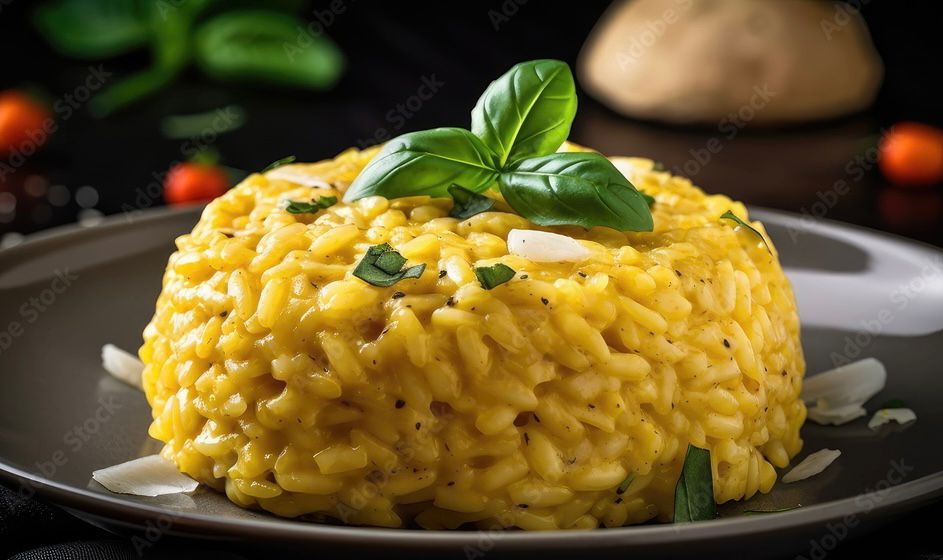
- Description: A creamy risotto made with Arborio rice, saffron, and a rich chicken or beef broth.
- Significance: Saffron, a precious spice, symbolizes hope and prosperity for the coming year.
1. Historical Significance: Risotto alla Milanese has a storied history dating back centuries. It is often associated with festive occasions and celebrations, making it a symbol of tradition and heritage.
2. Iconic Ingredient: The dish’s signature ingredient is saffron, a precious spice that imparts a vibrant yellow color and a unique flavor to the risotto. Saffron is often considered a luxury ingredient and is used to symbolize hope and prosperity during Christmas.
3. Seasonal Comfort: Christmas falls during the winter months, and Risotto alla Milanese provides warmth and comfort to those celebrating. The creamy rice dish is both hearty and soothing, making it a perfect addition to holiday feasts.
4. Culinary Craftsmanship: Making a perfect risotto requires skill and attention to detail. Achieving the ideal creamy texture and balance of flavors showcases the culinary craftsmanship and expertise of the cook.
5. Family Traditions: Many families have cherished recipes for Risotto alla Milanese that have been passed down through generations. Preparing and serving this dish during Christmas reinforces the importance of family bonds and the continuation of culinary traditions.
6. Unity and Togetherness: Christmas is a time for family gatherings, and sharing a steaming plate of Risotto alla Milanese fosters unity and togetherness. It’s a reminder of the joy of being surrounded by loved ones during the holiday season.
7. Regional Identity: Risotto alla Milanese is a symbol of Lombardy’s culinary identity. It represents the region’s rich gastronomic heritage and is often featured in menus as a showcase of Milan’s unique flavors.
In essence, Risotto alla Milanese is more than just a dish; it’s a representation of Lombardy’s culinary heritage, tradition, the importance of family, and the warmth of the Christmas season. Its historical significance, iconic saffron flavor, and culinary artistry make it a cherished and meaningful part of the holiday tradition in Northern Italy.
6. Polenta e Osei (Polenta with Small Birds)

- Description: Polenta, a staple made from cornmeal, often served with small game birds such as quails.
- Significance: It represents a rustic and traditional Northern Italian Christmas meal, reflecting the simplicity of rural life.
1. Historical Significance: Polenta e Osei has deep historical roots in Lombardy and is often associated with festive occasions, especially during Christmas. Its presence on the Christmas table is a reflection of the region’s culinary history and traditions.
2. Seasonal Delicacy: Small birds, such as quails or sparrows, were often hunted and eaten during the winter months when other food sources were scarce. Their inclusion in this dish represents resourcefulness and the ability to make the most of available ingredients during the Christmas season.
3. Celebration of Abundance: Polenta is a hearty and filling dish made from cornmeal, which was a staple food in Lombardy. When paired with small game birds, it symbolizes abundance and the spirit of generosity during the holiday season.
4. Culinary Tradition: Preparing and serving Polenta e Osei during Christmas is a culinary tradition that has been passed down through generations. Families often come together to make this dish, reinforcing the importance of family bonds and the preservation of cultural heritage.
5. Seasonal Comfort: Christmas falls during the winter months, and Polenta e Osei provides warmth and comfort to those celebrating. The combination of tender game birds and creamy polenta offers a satisfying and nourishing meal.
6. Unity and Togetherness: Christmas is a time for family gatherings, and sharing a dish like Polenta e Osei fosters unity and togetherness. It’s a reminder of the joy of being surrounded by loved ones during the holiday season.
7. Cultural Identity: Polenta is a symbol of the culinary identity of Northern Italy, and Polenta e Osei is a testament to the region’s rich and diverse gastronomic heritage. It showcases the flavors and traditions that make Lombardy unique.
In essence, Polenta e Osei is not just a dish; it’s a representation of Lombardy’s culinary heritage, resourcefulness, the importance of family, tradition, and the warmth of the Christmas season. Its historical significance, regional identity, and delicious flavors make it a cherished and meaningful part of the holiday tradition in Northern Italy.
Central Italy: Timeless Classics
1. Tortellini in Brodo (Tortellini in Broth)
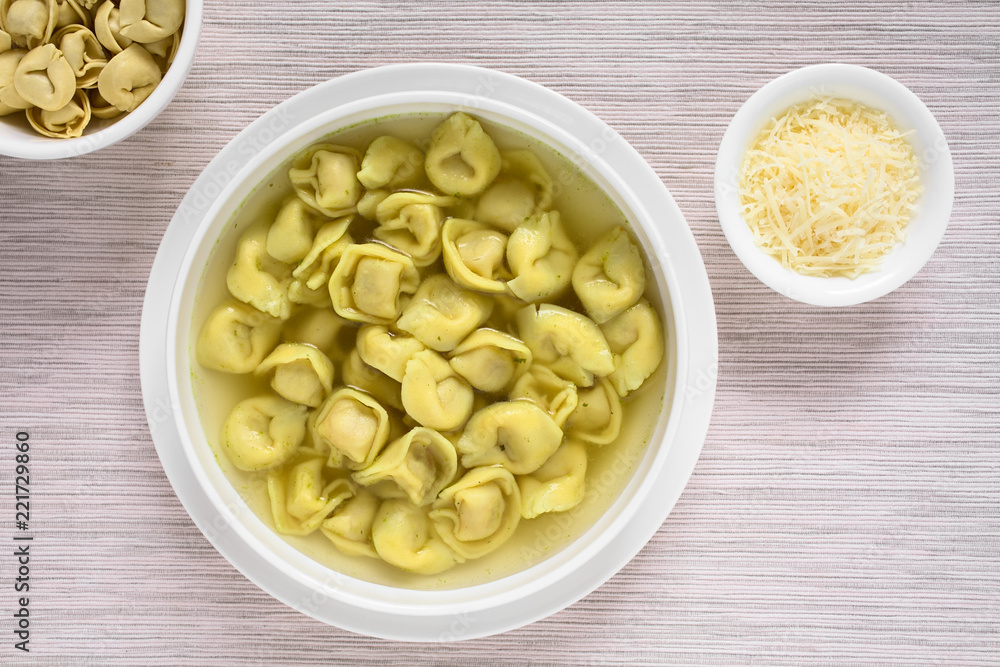
- Description: Delicate meat-filled pasta parcels served in a savory broth.
- Significance: The shape of tortellini is said to resemble Venus’s navel, symbolizing love and good fortune.
1. Symbol of Celebration: Tortellini in Brodo is often associated with festive occasions, and it holds a central place on the Christmas table. Its presence signifies the importance of celebrating and coming together during the holiday season.
2. Seasonal Comfort: Christmas falls during the winter months, and Tortellini in Brodo provides warmth and comfort to those celebrating. The hot, flavorful broth and tender pasta are both soothing and nourishing, offering respite from the cold.
3. Culinary Tradition: The art of making tortellini from scratch is a culinary tradition passed down through generations. Families often gather to create the delicate pasta parcels filled with a mixture of meats, cheese, and spices. This tradition reinforces the bonds of family and the continuity of culinary heritage.
4. Symbol of Unity: Christmas is a time for family reunions, and sharing a bowl of Tortellini in Brodo fosters unity and togetherness. It’s a reminder of the joy of being surrounded by loved ones during the holiday season.
5. Craftsmanship: Crafting tortellini is a skill that requires precision and dexterity. The pasta’s unique shape, often said to resemble Venus’s navel, symbolizes love and good fortune. Preparing and serving this dish reflects the artistry of Italian cooking.
6. Simplicity and Elegance: Tortellini in Brodo embodies the Italian culinary philosophy of using simple, high-quality ingredients to create dishes of elegance and flavor. Despite its simplicity, it is a dish that highlights the mastery of Italian cuisine.
7. Versatility: While the classic version features meat-filled pasta in a flavorful broth, there are variations of Tortellini in Brodo to accommodate different dietary preferences, including vegetarian or cheese-filled tortellini.
In essence, Tortellini in Brodo is more than just a dish; it’s a representation of Italian culinary heritage, the significance of family bonds, tradition, and the warmth of the Christmas season. Its handmade charm, culinary craftsmanship, and delicious flavors make it a beloved and meaningful part of the holiday tradition in Italy.
2. Cappelletti in Brodo (Cappelletti in Broth)
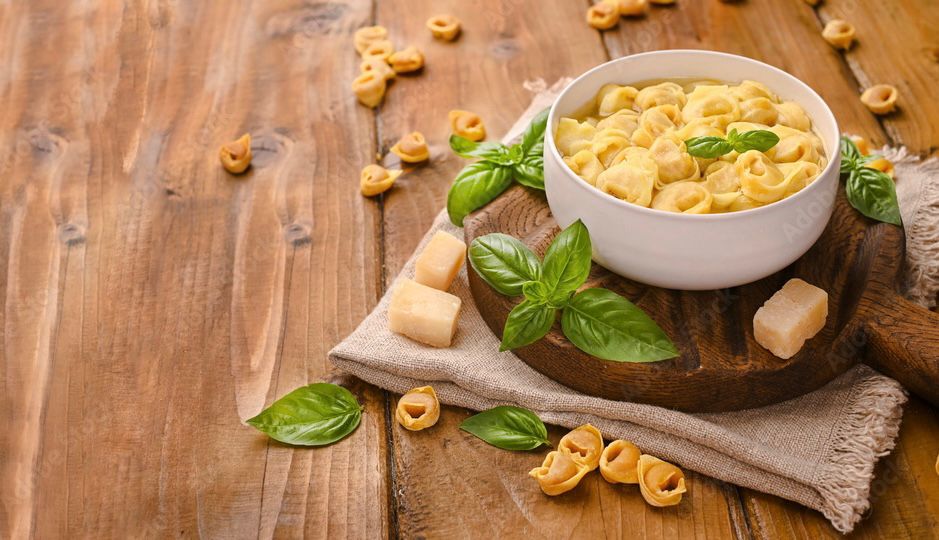
- Description: Similar to tortellini, cappelletti are small pasta hats filled with a mixture of meats, cheese, and spices, served in broth.
- Significance: Their hat-like shape is thought to bring warmth and protection.
1. Symbol of Celebration: Cappelletti in Brodo is often reserved for special occasions, making it a symbol of celebration during Christmas. It reflects the idea that the holiday season is a time for indulgence and coming together with loved ones.
2. Seasonal Comfort: In Italy, December can be quite cold, and Cappelletti in Brodo provides warmth and comfort to those celebrating Christmas. The hot, flavorful broth and tender pasta are both soothing and nourishing.
3. Culinary Tradition: Preparing and serving homemade cappelletti is a culinary tradition passed down through generations. Families often come together to make the pasta and fill it with a mixture of meats, cheese, and spices. This tradition reinforces the importance of family bonds and continuity.
4. Symbol of Togetherness: Christmas is a time for family gatherings, and sharing a steaming bowl of Cappelletti in Brodo is a way of fostering togetherness. It’s a reminder of the value of spending time with loved ones and creating lasting memories.
5. Craftsmanship: Making cappelletti from scratch is a skill that requires attention to detail and precision. The pasta’s small, hat-like shape represents warmth and protection, making it a meaningful and craft-intensive dish.
6. Simplicity and Elegance: Cappelletti in Brodo embodies the Italian culinary philosophy of using simple, high-quality ingredients to create dishes of elegance and flavor. Despite its simplicity, it is a dish that showcases the artistry of Italian cooking.
7. Versatility: While the classic version features meat-filled pasta in a flavorful broth, there are variations of Cappelletti in Brodo to accommodate different dietary preferences, including vegetarian or seafood-based fillings.
In essence, Cappelletti in Brodo is not just a dish; it’s a representation of Emilia-Romagna’s culinary heritage, the importance of family, tradition, and the warmth of the Christmas season. Its homemade charm, culinary craftsmanship, and delicious flavors make it a beloved and meaningful part of the holiday tradition in Italy.
3. Bruschetta al Pomodoro
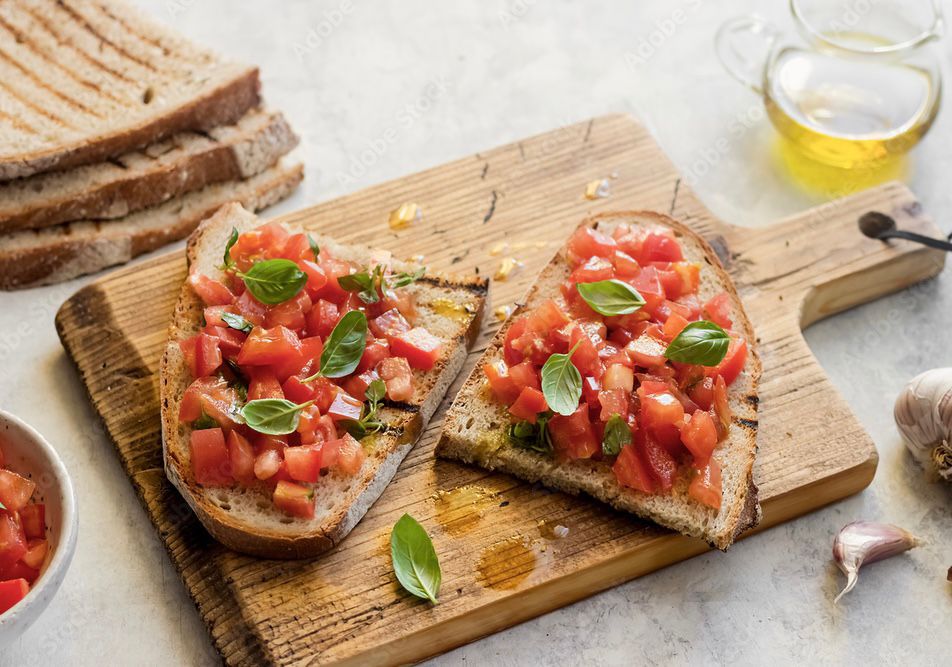
- Description: Toasted bread topped with fresh tomatoes, garlic, basil, and extra virgin olive oil.
- Significance: It celebrates the Mediterranean diet and the use of fresh, quality ingredients.
1. Celebration of Simplicity: Bruschetta al Pomodoro embodies the Italian culinary philosophy of simplicity and the use of fresh, high-quality ingredients. During the holiday season, when rich and complex dishes often take center stage, this appetizer serves as a reminder of the beauty of uncomplicated flavors.
2. Seasonal Freshness: Tomatoes and basil, key ingredients in Bruschetta al Pomodoro, are at their best during the summer and early autumn months. Preparing this dish during Christmas allows families to savor the last remnants of the year’s fresh tomatoes and basil, emphasizing the importance of seasonality.
3. Visual Appeal: The vibrant red of ripe tomatoes and the vibrant green of fresh basil create a visually striking and festive appearance on the table. The colors mirror the traditional Christmas color scheme, adding to the holiday spirit.
4. Versatility: Bruschetta al Pomodoro can be customized with various additions like garlic, balsamic vinegar, or mozzarella cheese. This versatility allows families to put their own unique twist on the dish while maintaining the tradition of enjoying it together.
5. Lightness and Balance: Amid the richness of holiday meals, Bruschetta al Pomodoro provides a refreshing and light option. The combination of fresh tomatoes, basil, garlic, and olive oil cleanses the palate and adds balance to the overall feast.
6. Connection to Tradition: The act of preparing and sharing Bruschetta al Pomodoro during Christmas is a way to connect with culinary traditions that have been cherished for generations. It’s a reminder of the enduring importance of family, food, and tradition.
7. Sharing and Togetherness: Bruschetta is often served as an appetizer, encouraging family members and guests to gather around and share food. This communal aspect reinforces the spirit of togetherness that defines the Christmas season.
In essence, Bruschetta al Pomodoro is more than just an appetizer; it’s a representation of Italian culinary principles, the celebration of simplicity and seasonality, and the importance of family, tradition, and togetherness during the Christmas season. Its fresh flavors and visual appeal make it a beloved part of the holiday tradition in Italy.
4. Sformato di Spinaci (Savory Spinach Flan)
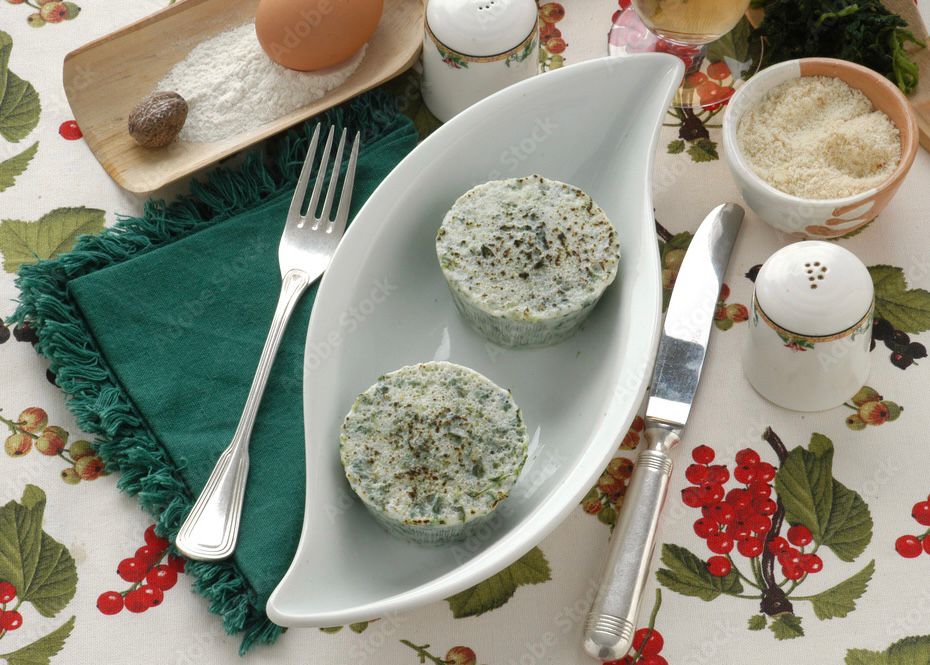
- Description: A savory spinach flan served with a luscious béchamel sauce.
- Significance: It represents indulgence and the celebration of special moments.
1. Celebration of Seasonality: Spinach is a cool-weather vegetable that thrives in the winter months. As such, Sformato di Spinaci represents the importance of utilizing seasonal ingredients during the Christmas season, emphasizing the region’s culinary connection to the land.
2. Balance in the Feast: Christmas Eve feasts in Italy can be quite rich and indulgent. Sformato di Spinaci provides a refreshing and lighter option that balances out the meal. Its creamy texture and savory spinach flavor cleanse the palate and add variety to the table.
3. Tradition and Heritage: Many families have cherished recipes for Sformato di Spinaci that have been passed down through generations. Preparing and serving this dish during Christmas connects people to their culinary heritage and creates a sense of nostalgia and continuity.
4. Culinary Craftsmanship: Making Sformato di Spinaci requires precision and attention to detail to achieve the perfect texture and flavor. It showcases the culinary craftsmanship and skill of those who prepare it, making it a point of pride during festive occasions.
5. Vegetarian Option: In a region where meat-based dishes often take center stage, Sformato di Spinaci serves as a vegetarian-friendly option that accommodates a variety of dietary preferences and allows all family members to partake in the Christmas feast.
6. Elegance and Presentation: Sformato di Spinaci is known for its elegant presentation. It is often molded into a flan-like shape and garnished with sauce or grated cheese, making it a visually appealing addition to the Christmas table.
7. Comfort and Tradition: Just like other traditional dishes, Sformato di Spinaci evokes a sense of comfort and tradition. Its appearance on the Christmas menu is a reminder of the enduring cultural significance of family, food, and celebration.
In summary, Sformato di Spinaci is not only a delicious and skillfully crafted dish but also a symbol of seasonality, tradition, balance, and culinary craftsmanship. It embodies the spirit of celebration and heritage that defines the Christmas season in Northern Italy.
5. Cacciucco

- Description: A Tuscan fish stew featuring garlic, tomatoes, and red pepper flakes, often with a variety of seafood.
- Significance: It symbolizes the warmth and hospitality of Central Italy and coastal traditions.
1. Coastal Heritage: Cacciucco celebrates the region’s strong connection to the sea. As a coastal dish, it emphasizes the importance of fishing in the livelihood and culture of the community. The rich variety of seafood in Cacciucco symbolizes the bounty of the sea.
2. Symbol of Unity: Cacciucco is often prepared and shared among family members and friends during the Christmas season. Its communal preparation and enjoyment reinforce the bonds of family and community, reflecting the spirit of togetherness that characterizes Christmas.
3. Seasonal Bounty: The timing of Christmas aligns with the availability of certain seafood varieties. Cacciucco typically features fish such as red snapper, squid, mussels, and octopus, which are abundant during the winter months. The dish embodies the idea of seasonality and enjoying ingredients at their freshest.
4. Culinary Tradition: Cacciucco is a dish with a long history in the region, passed down through generations. Preparing and serving it during Christmas represents the preservation of culinary traditions and the importance of honoring the past.
5. Comfort and Nourishment: Christmas is a time of celebration, but it’s also a time for comforting and nourishing food. Cacciucco, with its hearty, flavorful broth and seafood, provides both warmth and sustenance, making it perfect for the winter season.
6. Ritual of Sharing: The act of breaking bread (or dipping bread, in this case) together during the communal sharing of Cacciucco reinforces the sense of unity, shared joy, and gratitude that define the Christmas season.
In essence, Cacciucco is more than just a seafood stew; it’s a reflection of Southern Italy’s coastal heritage, its commitment to tradition, the importance of family and community, and the appreciation of seasonal ingredients. This dish embodies the spirit of Christmas in the region, bringing people together to celebrate the sea’s bounty and the bonds that tie them to their culture and each other.
6. Lasagna

- Description: Layers of pasta, rich meat sauce, creamy béchamel, and cheese, baked to perfection.
- Significance: It represents the heartiness and abundance of the season and the importance of family bonds.
1. Celebration of Abundance: Lasagna is a layered dish made with sheets of pasta, rich meat sauce, creamy béchamel sauce, and cheese. Its hearty and indulgent nature symbolizes abundance and plenty, which are central themes of the Christmas season.
2. Connection to Family: Christmas is a time for family gatherings, and preparing and sharing a large tray of lasagna is a cherished tradition. It brings family members together in the kitchen and around the table, reinforcing bonds and creating lasting memories.
3. Comfort and Warmth: Lasagna is a comforting and warming dish, perfect for the colder months of December. Its layers of flavors and textures provide a sense of coziness and well-being during the holiday season.
4. Versatility: Lasagna can be customized with various fillings and ingredients, reflecting regional and personal preferences. This adaptability allows families to put their own unique twist on the dish while maintaining the tradition of enjoying lasagna together.
5. Nostalgia and Tradition: Many families have cherished recipes for lasagna that have been passed down through generations. Preparing and serving lasagna during Christmas connects people to their culinary heritage and evokes a sense of nostalgia.
6. Culinary Craftsmanship: Making lasagna from scratch involves careful layering and attention to detail. It showcases the culinary craftsmanship and skill of those who prepare it, making it a point of pride during festive occasions.
7. Festive Presentation: The golden, bubbling top layer of melted cheese on a baked lasagna is visually appealing and adds a festive touch to the Christmas table, making it a centerpiece of the holiday feast.
In summary, lasagna is not only a delicious and satisfying dish but also a symbol of abundance, family togetherness, tradition, and the culinary craftsmanship that defines Italian cuisine. It embodies the spirit of celebration and warmth that characterizes the Christmas season in Italy and beyond.
Southern Italy: Sun-Soaked Delights
1. Baccalà alla Vicentina (Venetian-Style Salted Cod)
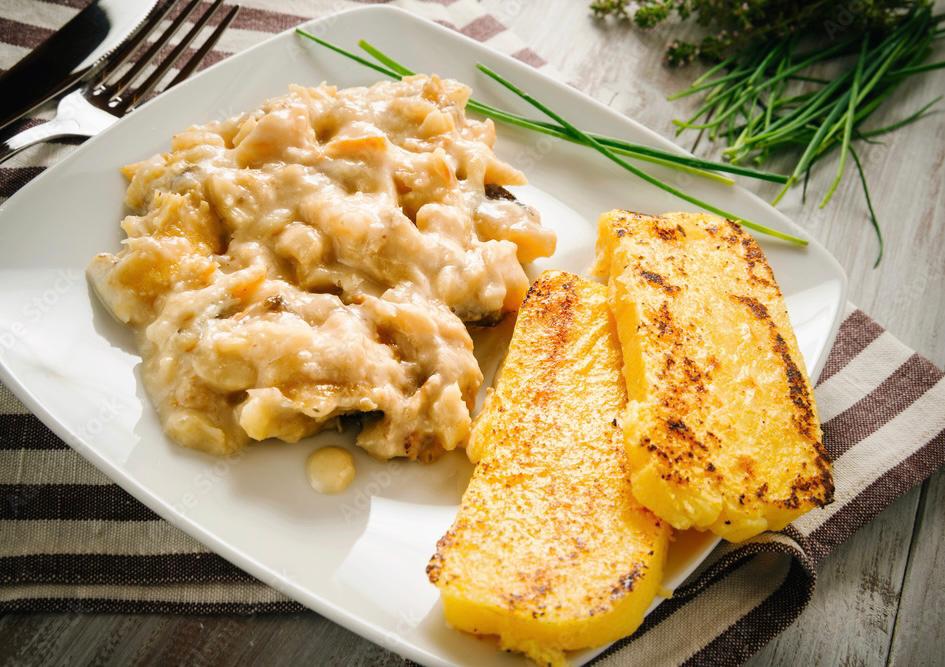
- Description: Salted cod cooked with milk, onions, and a hint of anchovy paste.
- Significance: It symbolizes the comfort and unity of family during the holiday season.
1. Historical Significance: Baccalà alla Vicentina has deep historical roots in the Veneto region, with recipes dating back centuries. It is a dish that reflects the rich culinary history of Northern Italy and the influence of trade and commerce along the Adriatic Sea.
2. Humble Origins: Salted cod (baccalà) was a staple of Venetian cuisine due to its long shelf life, making it a practical choice for Christmas Eve meals. This dish’s use of salted cod is a nod to the region’s humble culinary traditions.
3. Comfort and Unity: Baccalà alla Vicentina consists of salted cod cooked with milk, onions, and a hint of anchovy paste, resulting in a creamy and flavorful dish. It is a symbol of comfort and unity, as families come together to enjoy this heartwarming meal during the holiday season.
4. Preservation of Tradition: Christmas is a time for preserving cultural and culinary traditions. Baccalà alla Vicentina represents the commitment to maintaining the region’s authentic flavors and recipes, passed down through generations.
5. Seasonal Connection: While salted cod is a preserved ingredient, the preparation of Baccalà alla Vicentina during Christmas connects to the idea of seasonality and enjoying dishes that have been cherished for generations during the holiday season.
6. Community and Sharing: In the Veneto region, Baccalà alla Vicentina is often shared among friends and neighbors, fostering a sense of community and togetherness. It embodies the spirit of generosity and celebration during Christmas.
In essence, Baccalà alla Vicentina is not just a dish; it’s a representation of Northern Italy’s rich culinary history, the importance of preserving traditions, and the warmth of family and community during the Christmas season. Its unique flavors and cultural significance make it a cherished part of the holiday tradition in the Veneto region.
2. Cozze Gratinate (Baked Mussels)
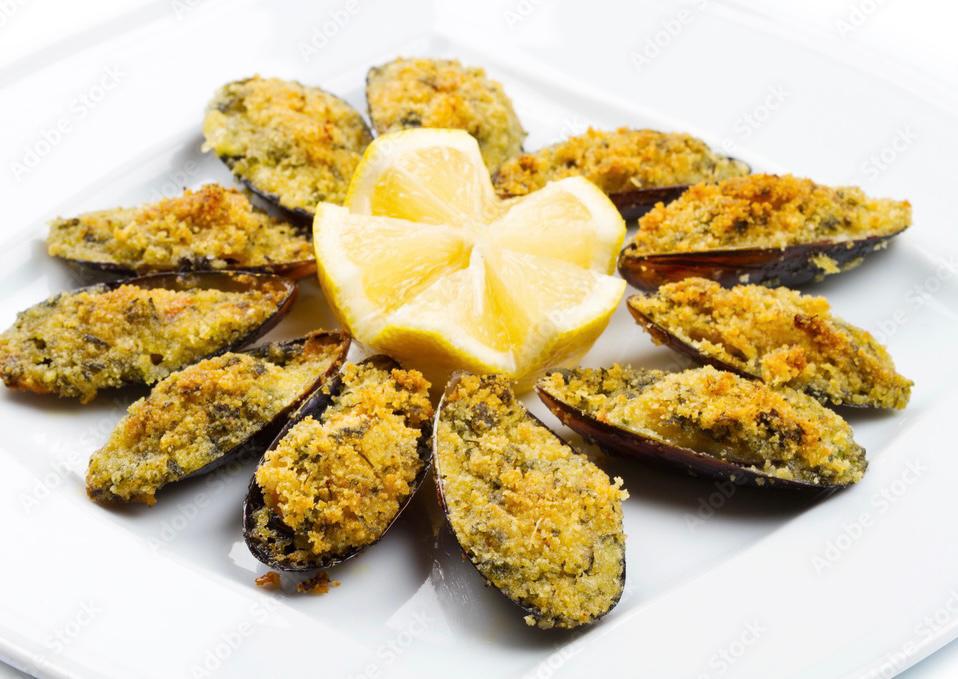
- Description: Mussels baked with breadcrumbs and herbs.
- Significance: It represents the coastal bounty of Southern Italy and the joy of seafood.
1. Coastal Bounty: Southern Italy boasts a stunning coastline and a strong connection to the Mediterranean Sea. Cozze Gratinate features mussels baked with breadcrumbs, herbs, and other flavorful ingredients. The dish is a celebration of the abundant seafood that the sea provides to the region throughout the year.
2. Symbol of Prosperity: Mussels, being bountiful and readily available, have come to symbolize prosperity in Southern Italian culture. Serving Cozze Gratinate during Christmas signifies the hope for a prosperous and abundant year ahead.
3. Family Traditions: Christmas is a time for family gatherings and traditions. Cozze Gratinate is often prepared and enjoyed as an appetizer or antipasto during the Christmas Eve feast, reinforcing the importance of family unity and the continuation of culinary traditions from one generation to the next.
4. Simplicity and Flavor: The dish’s simplicity—mussels, breadcrumbs, herbs, and a touch of olive oil—highlights the natural flavors of the seafood. It is a testament to the Southern Italian approach to cuisine, which emphasizes the quality of ingredients and their innate deliciousness.
5. Connection to the Sea: Southern Italy’s cuisine is deeply rooted in its coastal heritage. Cozze Gratinate is a way to pay homage to the sea and acknowledge its significance in the daily lives and traditions of the people.
In summary, Cozze Gratinate is not just a dish; it’s a representation of Southern Italy’s coastal abundance, the desire for prosperity, the importance of family, and the simple yet flavorful approach to food. During Christmas, it serves as a reminder of the region’s culinary and cultural richness
3. Insalata di Mare (Seafood Salad)
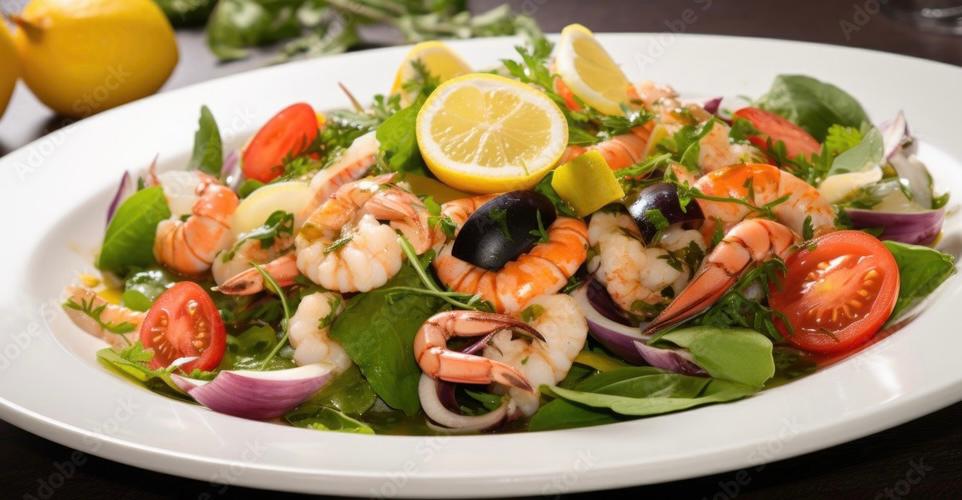
- Description: A refreshing salad featuring marinated seafood such as octopus, shrimp, and mussels.
- Significance: It symbolizes the coastal heritage and the importance of family gatherings by the sea.
1. Coastal Heritage: Southern Italy is known for its stunning coastline and rich maritime traditions. Insalata di Mare features an array of marinated seafood, such as octopus, shrimp, and mussels, often dressed with olive oil, lemon juice, garlic, and parsley. This dish symbolizes the region’s deep connection to the sea and the importance of seafood in its cuisine.
2. Celebration of Abundance: The combination of various seafood ingredients in Insalata di Mare represents the abundance of the sea’s bounty, especially during the holiday season when many families indulge in special meals. It’s a celebration of plenty and a reminder of the gifts that the Mediterranean provides.
3. Family Gatherings: Christmas in Southern Italy is a time for families to come together. Insalata di Mare is often served as an appetizer or antipasto during the Christmas Eve feast, symbolizing the importance of family unity and togetherness. The act of sharing this dish reinforces the bonds between loved ones.
4. Refreshing Flavor: The fresh and zesty flavors of Insalata di Mare provide a delightful contrast to the richer dishes often enjoyed during the Christmas season. Its light and refreshing nature cleanse the palate and create a harmonious balance in the overall holiday meal.
In essence, Insalata di Mare is not just a dish; it’s a representation of Southern Italy’s coastal heritage, the joy of family gatherings, and the celebration of abundance during the festive Christmas season. Its vibrant flavors and cultural significance make it a beloved part of the holiday tradition in the southern regions of Italy.
4. Cannelloni al Forno

- Description: Large pasta tubes filled with a mixture of ricotta and spinach, baked with a rich tomato sauce.
- Significance: It represents the indulgence and the joy of family feasting.
1. Culinary Tradition: Cannelloni, which means “large reeds” in Italian, consists of large pasta tubes typically stuffed with a delicious mixture of ricotta cheese, spinach, and sometimes ground meat. The dish reflects the rich culinary traditions of Italy, where pasta is a fundamental element of the cuisine.
2. Festive Indulgence: Cannelloni al Forno is often enjoyed during special occasions, including Christmas. The act of making and enjoying this dish is a celebration of abundance and the joy of coming together with loved ones during the holiday season.
3. Unity and Family Bonding: The process of making cannelloni, often a collaborative effort involving multiple family members in the preparation, stuffing, and baking, reinforces the importance of unity and togetherness within the family.
4. Seasonal Ingredients: Depending on the region and personal preferences, the filling of Cannelloni al Forno may include seasonal ingredients such as spinach, which is commonly available during the winter months. Using seasonal produce underscores the connection to the land and the changing of the seasons.
5. Symbol of Celebration: The dish’s hearty and flavorful nature makes it a symbol of celebration and festivity. Its presence on the Christmas table signifies the joy of the holiday season and the happiness that comes with sharing a delicious meal with loved ones.
5. Pasta con le Sarde (Pasta with Sardines)

- Description: Pasta with fresh sardines, wild fennel, raisins, and pine nuts.
- Significance: It embodies the fusion of flavors and cultural influences in Southern Italian cuisine, symbolizing unity and the celebration of diversity.
1. Historical Roots: . The dish combines ingredients like sardines, fennel, and raisins that were introduced to Sicily by the Arabs. As such, it reflects the island’s rich and diverse culinary history.
2. Symbol of Unity: The dish often brings together seemingly contrasting ingredients—sardines, which are considered humble, and the sweet and aromatic elements like raisins and saffron. This blending of flavors symbolizes the idea of unity and harmony within the family during the holiday season.
3. Seasonal Ingredients: Many of the ingredients used in Pasta con le Sarde are seasonal, which adds to its significance. The use of fresh sardines, wild fennel, and saffron during the Christmas season showcases the importance of celebrating the bounty of the land and sea during this special time of year.
4. The Sardine Symbol: In some interpretations, the sardines in the dish are said to symbolize the humble origins of the Holy Family. Just as they found shelter in a humble stable during the nativity, Pasta con le Sarde uses sardines, which were once considered a humble fish, to create a festive and meaningful dish.
In essence, Pasta con le Sarde embodies the Sicilian spirit of celebrating history, unity, and the beauty of seasonal ingredients during the Christmas season. It’s a dish that not only delights the palate but also tells a story of Sicilian culture and tradition.
6. Calzone di Natale (Christmas Calzone)

- Description: A savory calzone filled with ricotta, mozzarella, salami, and hard-boiled eggs.
- Significance: It represents the abundance and unity of family during Christmas.
As we journey through Italy from north to south, we discover a rich tapestry of flavors, traditions, and symbolism. These Christmas Eve dishes not only delight the palate but also tell stories of history, unity, and the deep-rooted cultural significance of the holiday season in Italy. Whether you find yourself in the snowy north, the heart of the country, or the sunny south, these dishes are a testament to the enduring importance of family, celebration, and good food during the most wonderful time of the year. Buon Natale!



